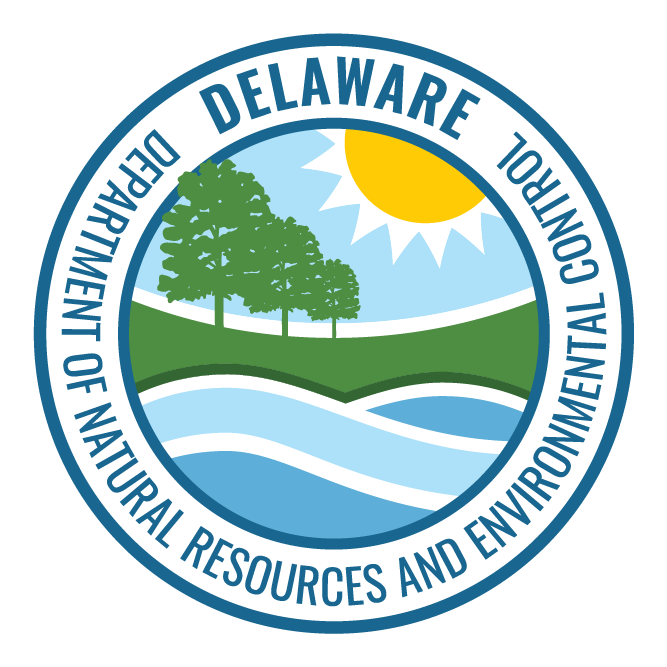Pages Tagged With: "nonpoint source"
Chesapeake Implementation Program
The DNREC Chesapeake Implementation Program administers water quality focused programs and manages grants that fund projects within the Delaware portion of the Chesapeake Bay Watershed designed to reduce nonpoint source (NPS) pollution.Contact Us
Holly Walker 302-608-5458
Buffer Incentive Program in the Chesapeake Bay Watershed
The Department of Natural Resources and Environmental Control (DNREC) offers incentives for urban and agricultural landowners to install buffers along waterways within Delaware’s Chesapeake Bay watershed. Eligible landowners that qualify will receive an incentive payment for land they enroll in the program. A buffer is a linear stripCommunity Conservation Assistance Program
The Delaware Community Conservation Assistance Program (DeCAP) is a cost-share program that provides financial incentives, technical and educational assistance to property owners for installing eligible Best Management Practices (BMPs) in Delaware’s Chesapeake Bay Watershed.Contact Us
Local Government Guide to the Chesapeake Bay
The Local Government Guide to the Chesapeake Bay is a seven-module series created to support decision-making by local officials. A Local Government Guide to the Chesapeake Bay, a video introduction from the Chesapeake Bay Program.
Success Stories: Tappahanna Ditch
Runoff from agricultural areas caused high bacteria levels in Delaware’s Tappahanna Ditch of the Choptank River. As a result, the Delaware Department of Natural Resources and Environmental Control (DNREC) added the watershed to the 1996 Clean Water Act (CWA) section 303(d) list of impaired waters for bacteria and nutrients. Watershed stakeholders provided technical assistance andSuccess Stories: Iron Branch
Runoff from agricultural areas caused high bacteria levels in Delaware’s Iron Branch of Indian River Bay. As a result, the Delaware Department of Natural Resources and Environmental Control (DNREC) added the watershed to the 1996 Clean Water Act (CWA) section 303(d) list of impaired waters for bacteria. Watershed stakeholders provided technical assistance and installed agriculturalConservation Reserve Enhancement Program
DNREC is part of a state and federal partnership with the USDA Commodity Credit Corporation, that aims to add up to 10,000 acres of Delaware agricultural land to the USDA Conservation Reserve Enhancement Program (CREP). Landowners in the CREP receive funding to support land conservation practices.Chesapeake Bay Projects
This page includes information on some of the projects undertaken by DNREC and its partners to help meet the goals of the Chesapeake Bay Watershed Implementation Plan. Related Information Best Management Practices StoryMap Redden State Forest Project (2013)
Chesapeake Bay Watershed Implementation Plan – Phase III
There have been three phases of Delaware’s Chesapeake Bay WIP. Delaware developed its Phase I WIP in 2010 and its Phase II WIP in 2012. Both the Phase I and Phase II WIPs describe actions and controls to be implemented by 2017 and 2025 to achieve applicable water quality standards. The Phase III WIP providesChesapeake Bay Watershed Implementation Plan – Phase I
Draft Phase I Watershed Implementation Plans (WIPs) were due to EPA on Sept. 1, 2010. Final plans were submitted on Nov. 29, 2010. Following the release of Delaware’s Draft Phase I WIP, numerous comments and questions from both EPA and various stakeholder groups within the watershed were submitted.Chesapeake Bay Watershed Implementation Plan – Phase II
Delaware’s Draft Phase II Watershed Implementation Plan for the Chesapeake Watershed was submitted to the EPA on Dec. 15, 2011. EPA reviewed the document and provided comments in Feb. 2012. Public comments were accepted through March 21, 2012. All suggestions were considered and the document was modified accordingly.Events and Workshops
The DNREC Nonpoint Source Program has hosted and participated in a series of events, workshops, and presentations designed to promote and support improvements to the quality of Delaware’s waterways. Delaware Agriculture Week (January 8-11, 2024) Delaware Agriculture Week, held at the Delaware State Fairgrounds in Harrington, isChesapeake Bay Milestones
To continue accelerating progress toward meeting water quality goals, the EPA and Chesapeake Bay Program jurisdictions, including Delaware, agreed to set interim two-year milestones – or short-term goals – as a critical part of an accountability framework. ChesapeakeStat Find data and informationChesapeake Bay Watershed Implementation Plan
Delaware is among six Chesapeake Bay Watershed states – along with Maryland, Virginia, West Virginia, Pennsylvania, and New York – and the District of Columbia committed to a federal-state initiative to develop a pollution “diet” that will help restore the water quality of the Bay and its tidal waters by 2025. [columnVerification of Best Management Practices
The implementation, tracking and reporting of Best Management Practices (BMPs) has been at the center of the Chesapeake Bay Program partnership’s restoration efforts for almost three decades. Properly installed and functioning practices and technologies reduce local flooding, protect sources of drinking water, ensure against the collapse of streamSuccess Stories: Pike Creek
Pike Creek is in northern New Castle County and is a tributary of White Clay Creek within the White Clay Creek subbasin. The lower portions of the White Clay Creek are tidally influenced. In 2000, the President signed a law adding 190 miles of the White Clay Creek and its tributaries to the National WildBiennial NPS Training and Meeting
The DNREC Nonpoint Source Program (NPS), in partnership with Environmental Protection Agency (EPA) Region 3, hosted the 2019 Mid-Atlantic Nonpoint Source Program Training and Meeting in October of 2019. The states in the EPA Region 3 (Delaware, Maryland, Virginia, Pennsylvania, and West Virginia) take turns hosting this biennial event. The next meeting,Success Stories: Trap Pond
Southern Delaware’s Trap Pond is a tributary of Broad Creek, which drains to the Nanticoke River and flows to the Chesapeake Bay. This area has a unique ecology, as it is home to the northernmost natural stand of bald cypress in the United States. The area also contains a 2,000-acre wetland, one of the largestSuccess Stories: Gravelly Branch
Southern Delaware’s Gravelly Branch watershed drains into the Nanticoke River, which flows into the Chesapeake Bay. Gravelly Branch begins in the town of Ellendale and flows toward the city of Seaford. The major land use in the 24,423-acre Gravelly Branch watershed is agriculture.Success Stories: Upper Marshyhope Creek
The Delaware portion of the Marshyhope Creek watershed (Upper Marshyhope Creek) lies within Kent and Sussex counties on the western edge of Delaware. The creek flows into Maryland before eventually discharging into the Nanticoke River, which in turn empties into the Chesapeake Bay. The drainage area of the Marshyhope Creek watershed within Delaware is approximatelySuccess Stories: Cow Bridge Branch
Stockley Branch flows into Cow Bridge Branch watershed, which spans 28,676 acres and is located in the Indian River watershed in southeastern Sussex County. The Indian River Bay watershed makes up one of three of Delaware’s interconnected Inland Bays (Rehoboth Bay, Indian River Bay, and Little Assawoman Bay). [buttonSuccess Stories: Little Assawoman Bay
Little Assawoman Bay — the smallest of Delaware’s Inland Bays — is connected to Indian River Bay on the north by the Assawoman Canal and to Assawoman Bay on the south via a narrow channel. The Little Assawoman Bay watershed is an agriculture-dominated watershed covering three square miles with no influencing point sources. The areaSuccess Stories: Noxontown Pond
Noxontown Pond covers approximately 158 acres near the headwaters of the Appoquinimink River watershed. This watershed contains three of the fastest developing municipalities in the state – Odessa, Townsend, and Middletown. While much of this watershed was historically agricultural, increased development has led to the conversion of farms into suburban residential communities. Less than 9%Success Stories: Records Pond
Records Pond, also known as Laurel Lake, was created in 1900 with the completion of the Records Pond Dam on Broad Creek. Although Records Pond is just over 90 acres, it is one of the larger lakes in Delaware. Almost at sea level, and with a maximum depth of 10 feet, the pond is relativelySuccess Stories: Coursey Pond
Coursey Pond, in southeast Kent County, is a 58-acre pond draining to the Murderkill River, a tributary to the Delaware Bay. The headwaters of the Murderkill River begin just west of Felton and flow towards Bowers Beach, with the lower 10.5-mile portion of the river influenced by tides. The Coursey Pond area is home toSuccess Stories: Abbott’s Mill Pond
Abbott’s Mill Pond was created over 200 years ago by damming Johnson Branch in order to power a grist mill. The pond covers approximately 25 acres on Johnson Branch, a tributary near the headwaters of the Mispillion River watershed. The pond is now maintained as part of the Abbott’s Mill Nature Center used for publicChesapeake Bay Implementation Grant Program
Chesapeake Bay Implementation Grant (CBIG) funds enable states within the Chesapeake Bay Watershed to meet the goals outlined in the 2014 Chesapeake Bay Watershed Agreement, including the improvement of water quality and achieving Total Maximum Daily Loads (TMDLs) for pollutants of concern.Contact Us
Nonpoint Source Section 319 Grant Program
The DNREC Nonpoint Source Program administers a competitive grant program made possible through Section 319 of the Clean Water Act. The grant provides funding for projects designed to reduce nonpoint source (NPS) pollution in Delaware.Contact Us
Ben Coverdale Nonpoint Source Program 302-608-5458




